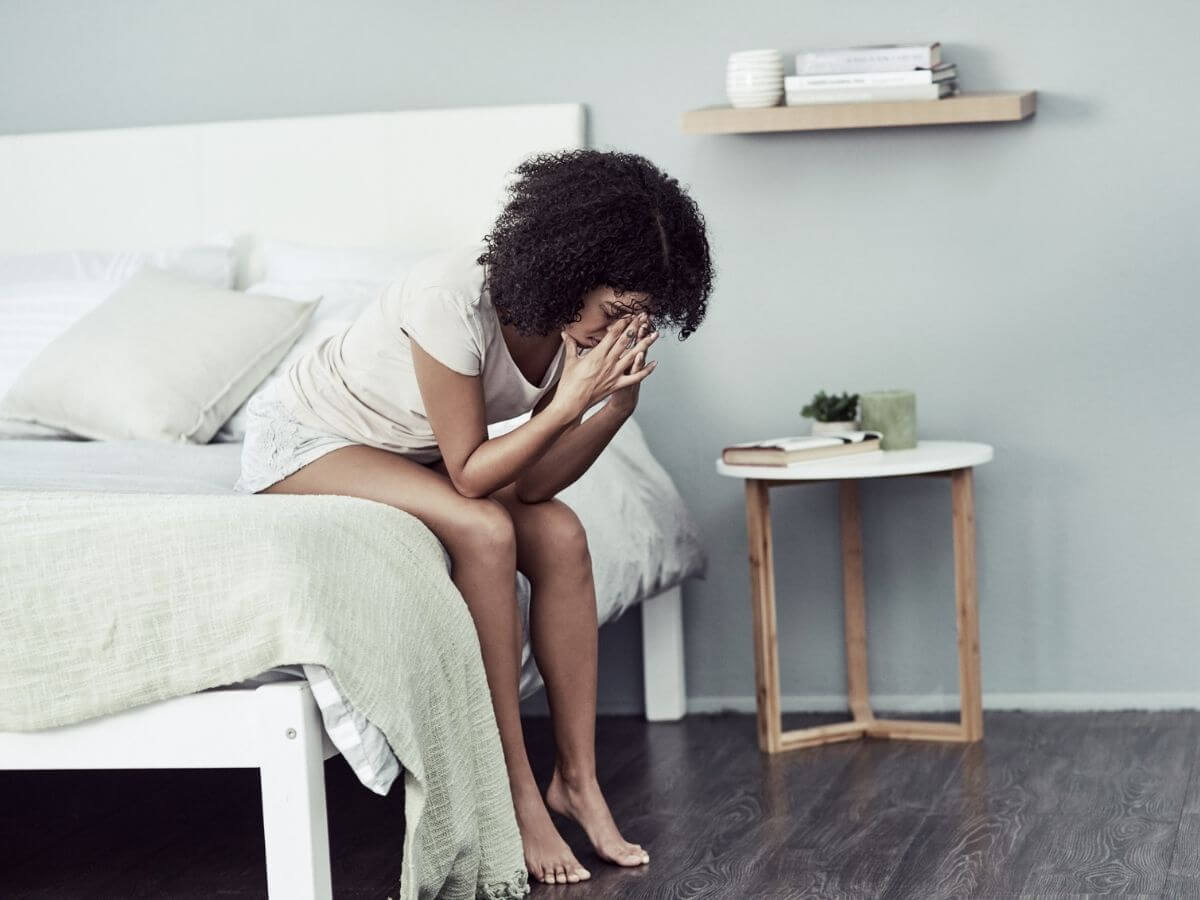
Tips to Help Relieve PMS – PMS stands for premenstrual syndrome. It means a group of symptoms that occur in a female body before the menstruation period(premenstrual period). There are several symptoms of discomfort that a female may experience like mood swings, body aches, constipation, diarrhoea, etc. These are the mild and common symptoms that most females experience and PMS symptoms go away with time (if you are not pregnant) when the period starts and appropriate levels of hormones start rising.

The crucial thing to know about PMS is that most females experience some premenstrual symptoms, but that doesn’t mean all women have clinical PMS, For diagnosis of PMS, an obstetrician-gynaecologist must verify a pattern of symptoms keeping a record of your symptoms can help to understand if you have PMS or not. There are no special physical discoveries or lab tests to diagnose premenstrual syndrome completely.
If your PMS symptoms start to disturb your life, you should go for medical treatment. It will depend on how serious your symptoms are.
PMS is a combination of emotional and physical symptoms that occurs after ovulation at which time the oestrogen and progesterone levels start decreasing dramatically. Many women feel physical or mental changes during the days before menstruation. When these symptoms arise month after month, and affect the normal life of a woman, they are called premenstrual syndrome (PMS). To reduce the pain we will find out some tips to help relieve PMS.
However, Some women get their periods with no indication of PMS or only mild symptoms. Whereas, for other women, these symptoms may be so severe that it makes it hard to participate in daily activities for them. After pregnancy, PMS might come back, but you might have different PMS symptoms.
Some conditions may imitate PMS, including chronic fatigue syndrome, thyroid disorders, mood disorders, depression, and anxiety. Your specialist may advise tests, such as a thyroid function test or mood screening tests, these tests will help to diagnose the symptoms exactly. When the PMS symptoms persist for too long with extreme effects it can be a sign of PMDD premenstrual dysphoric disorder. PMDD is not as common as PMS and it goes away at the time of menopause (when a female no longer gets periods and it stops permanently).
Each day for at least 2 to 3 months, note down and rate the severity of any symptoms you feel. Record the dates of your periods as well as your symptoms are mild to moderate, they often can be relieved by changes in lifestyle or diet. The menstrual cycle is generally defined as a 28-day cycle with four phases. a woman’s body is required to produce different hormones in each phase, in addition, each of these phases comes with its setting of physical and emotional changes.
break down of these phases:
PMS is a syndrome caused by changing hormone levels during the luteal phase. After ovulation, women may feel exhausted, irritable, cranky and lack concentration. These symptoms increase as a female gets closer to menstruation.
No single treatment will be effective for everyone. If you have mild symptoms of PMS and feel like you can tackle them on your own with some minor daily life changes, you can manage them with Over-the-counter (without prescription) pain relievers such as ibuprofen, aspirin, or naproxen, to help ease cramps, headaches, backaches, and breast tenderness,
It is shown in a study that during the luteal phase of the menstrual cycle, which starts with ovulation and ends when a period begins, that may increase appetite and PMS exhaustion and irritability can stimulate sugar craving. Too much sugar can make symptoms worse, and affect your mood. A great option is a hearty, satisfying meal with lots of protein and good fats—like a veggie omelette, poke bowl, chicken on a bed of greens, Protein plus healthy fats will reduce inflammation and muscle cramps.
You will feel happy and relaxed after a sweaty workout. 30 min a day of moderate-intensity exercise may help improve mood and overall well-being, So do what you love you can also join yoga or dance classes. Even it is shown that as compared to aerobic exercises the yoga exercises and movements were more helpful in relieving the symptoms of PMS
Heat reduces stress, pain and reflexes in the body, more relief, you can add Epsom salt to the hot water. The magnesium in the salt will relax sore muscles and make your body feel light and happy. Keeping a hot water bag during period cramps is not a new method to reduce pain and cramps. Taking a hot water bath helps to get a sound sleep, reduces tension and relaxes abdominal pain.
Enough sleep because Lack of sleep is linked to depression and anxiety, having too much stress and burden whether emotional, physical, or nutritional causes a high amount of endorphins and cortisol which may interrupt the proper production of hormones and make the pain and symptoms of PMS more severe.
Taking healthy foods and a proper diet can include calcium and vitamin B6, Avoid salt, caffeine, sugar, and alcohol two weeks before the period. Calcium carbonate, vitamin D magnesium and fatty acids help to cope with the symptoms of PMS. It is reported that the women who take supplements during PMS have felt less fatigue and less depression. It is advised to consult with your healthcare specialist before consuming any random supplement.
We hope that it was an informative discussion but as the treatment is not the same for every individual in the same way symptoms also vary from person to person. If you or someone in your known facing this problem contact us for accurate treatment and diagnosis. At last, for expert advice visit the best gynaecologist in Chandigarh, Dr Ruchi Rai Ahuja!
Copyright © 2025 Dr Ahuja Clinic. All Rights Reserved | Marketing by : WebHopers
Website Design by CSW Technologies